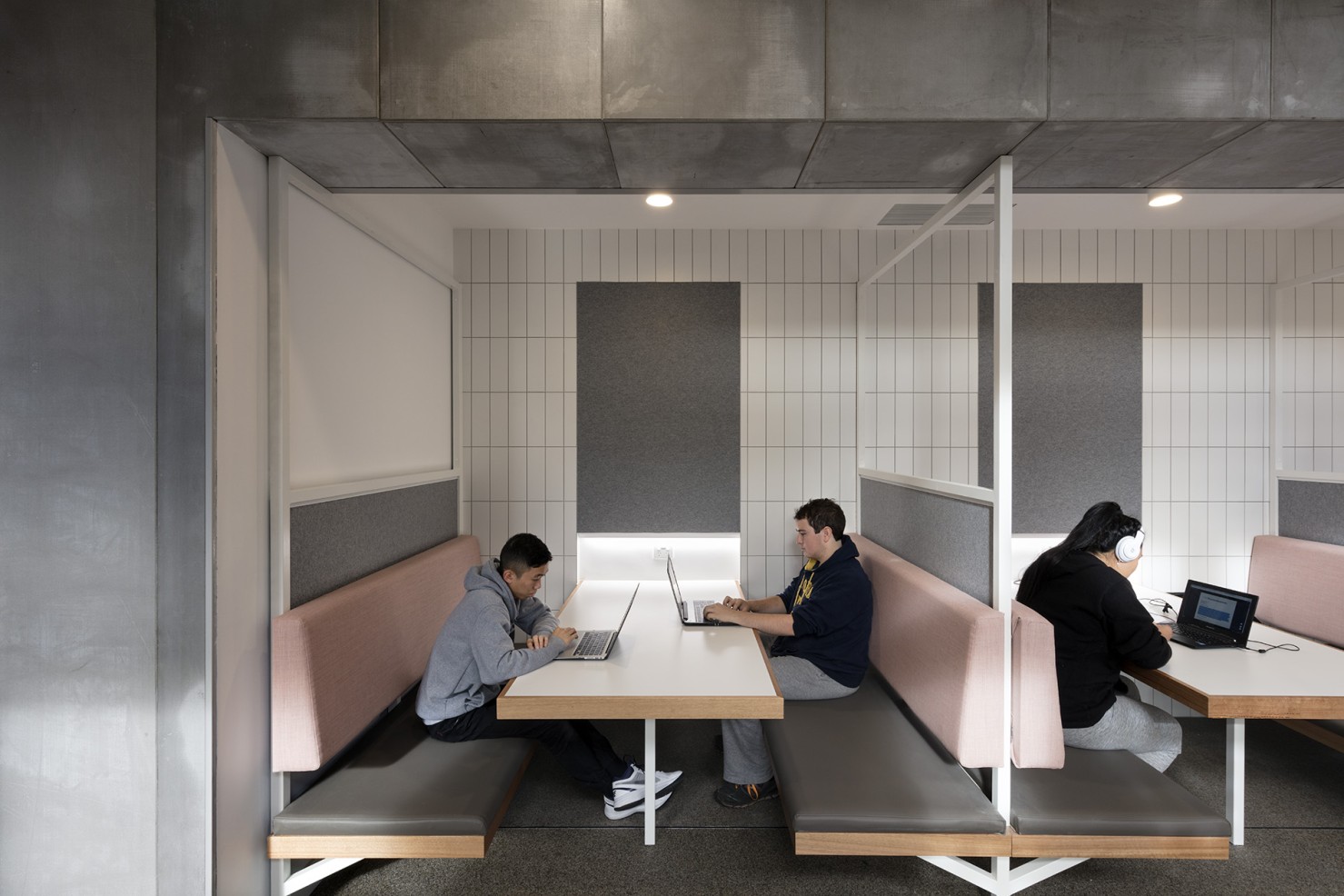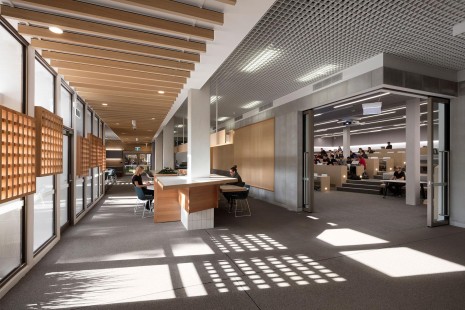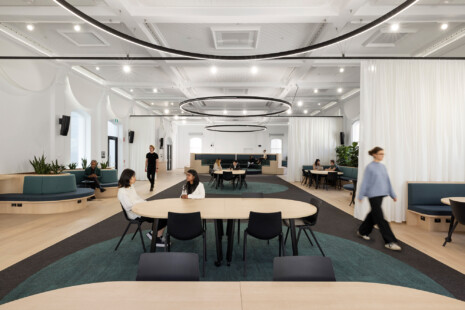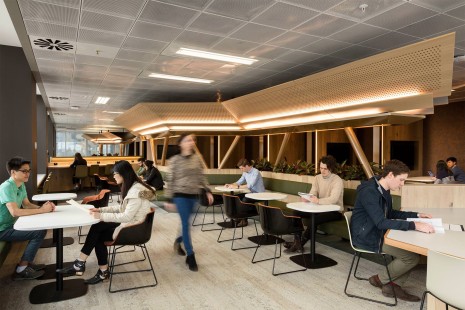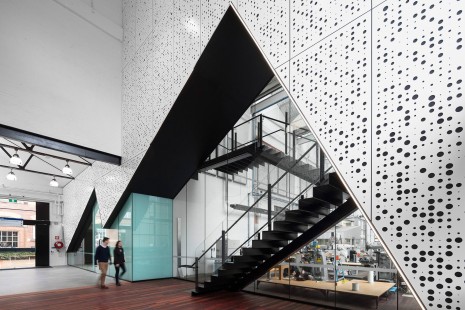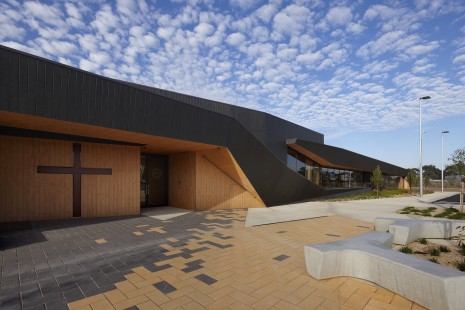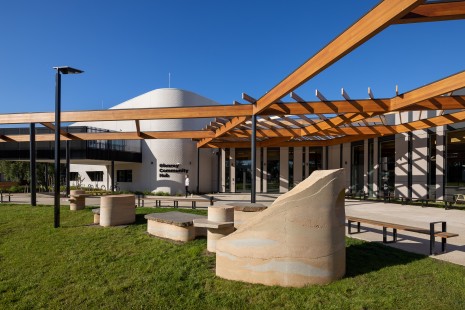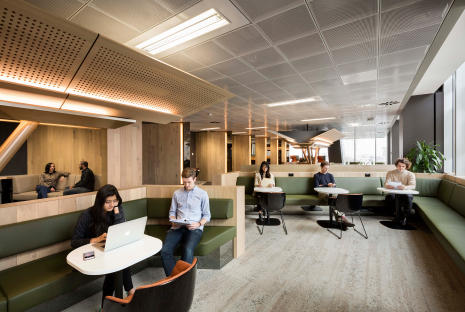
Reimagining Student Spaces
Reinvigorated pedagogies are driving the need for reimagined student spaces and innovative learning environments.
Today’s newest lecture theatres are nothing like those of yesteryear and neither should they be. In order to create ‘sticky spots’ on campus, architects and designers have had to reimagine these traditional learning environments to provide increased amenity and functionality for both staff and students.
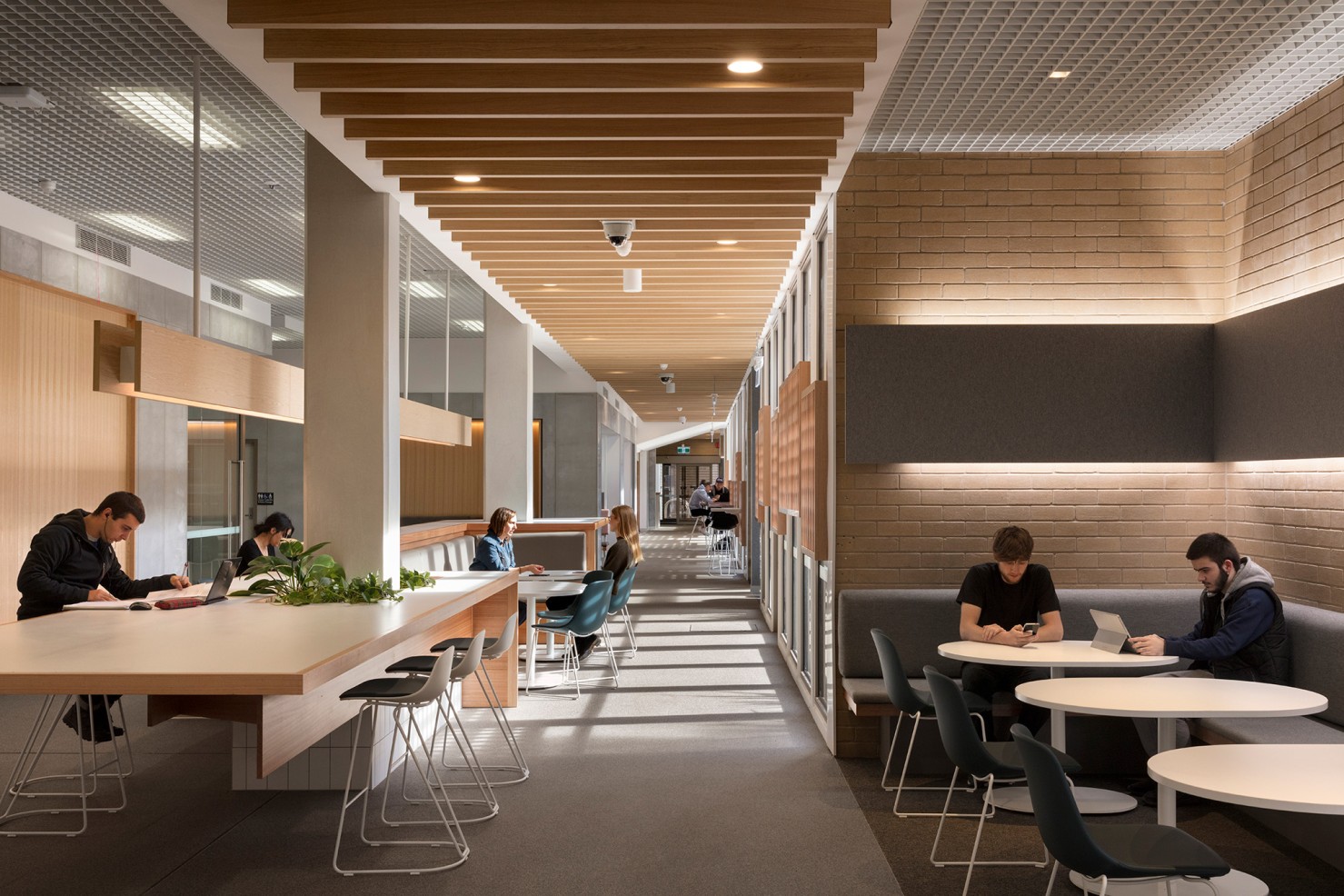
This is exactly what the Melbourne studio has done with its recent refurbishment of two lecture theatres in Victoria University’s Building C. Not only do these spaces now facilitate interactive modes of learning, but they also support a series of adjacent study and informal learning settings.
The project involved a significant reconfiguration of the existing floor plate, which included the infill of an existing external covered walkway. This resulting ‘internal street’ blurs the boundaries between inside and outside and provides a link between the renovated learning spaces and the rest of the campus. It also serves to flood the interior with natural light and timber shade screens incorporated within the facade create a dappled effect that adds a sense of tactility to the neutral palette.
These biophilic expressions are subtle yet effective and contribute to the ‘stickiness’ of the spaces. So does a sense of connectivity, which is activated by the use of large sliding glass doors that visually and physically open up the lecture theatres. But the design’s most unexpected feature is perhaps its most inventive, not to mention the most attractive to students. Booth seating incorporated into one of the theatres encourages group collaboration during lectures and also provides additional informal study areas when the theatres aren’t formally timetabled. The overall scheme works hard in delivering a student-centred design that’s highly flexible and comfortable, ensuring students want to stay on campus and in turn look forward to coming back.
